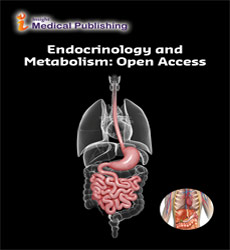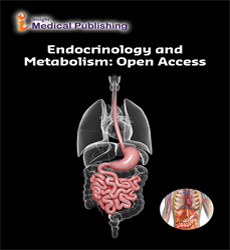Ketogenic Diet will be Further Clinically Applied with Positive Effects
Department of Medical Research, Tokushima University, Tokushima, Japan
- *Corresponding Author:
- Hiroshi Bando
Department of Medical Research
Tokushima University, Nakashowa 1-61
Tokushima 770-0943 Japan
Tel: +81-90-3187-2485
E-mail: pianomed@bronze.ocn.ne.jp
Received Date: 17 June, 2018; Accepted Date: 10 July, 2018; Published Date: 19 July, 2018
Citation: Bando H (2018) Ketogenic diet will be further clinically applied with positive effects. Endocrinol Metab Vol. 2 No. 2: e102
Copyright: © 2018 Bando Hl. This is an open-access article distributed under the terms of the Creative Commons Attribution License, which permits unrestricted use, distribution, and reproduction in any medium, provided the original author and source are credited.
Editorial
In recent years, ketogenic diet has been drawing attention in nutritional and diet therapy. Looking back on history, it was first used in the 1920s as epilepsy, autistic behavior and childhood obesity fasting. At that time, the group of Geyelin and Wilder should be highly appreciated for the successful achievement [1]. Thereafter, ketogenic diet has been adapted to children in the world. On the other hand, application of ketogenic diet to adults has been very limited [2].
On the other hand, worldwide increasing of metabolic syndrome such as obesity and diabetes mellitus has brought the spotlight on the ketogenic diet. For reducing weight and decreasing blood glucose, low carbohydrate diet (LCD) was introduced and developed. Atkins and Bernstein initiated LCD in European countries, while author and colleagues started LCD in Japan [3-6]. Through lots of clinical studies, important effects of ketogenic diet and ketone bodies (KB) has been gradually known to medical personnel and public people. They include 1) elevated KB in blood is not simply in risky situation, 2) brain and muscle can use KB similar to glucose, 3) KB generate much energy, 4) KB has anti-cancer effects [7].
Regarding the ketone bodies that generate energy, there are two clinically active ketone bodies, beta-hydroxybutyrate (βHB) and acetoacetic acid (AcAc) [8,9]. Both are converted to each other, and the former is occupying 60 to 90% in blood and the latter 10 to 30% [10,11]. In the light of its function, ketone bodies support the survival of the mammals during energy deficits by working as an alternative source of ATP [12].
Based on comparative zoologic investigation and biochemical data, fetuses of all kinds seemed to be growing and developing using ketogenic energy [13]. This mechanism has kept constant for long process of animal evolution. Therefore, β-HB has been considered as the basic engine that generates energy in all terrestrial organism species.
Close relationship has been found between ketone bodies involved in lipid metabolism and insulin related to carbohydrate metabolism. Consider a case where LCD is provided for obese or diabetic patients in a clinical setting. As almost no carbohydrates are ingested to the body, secretion of insulin is kept on a minimum level and carbohydrate metabolism would be almost disappeared. Then, lipid metabolism becomes active in a few days, ketone bodies rapidly increase in the blood. In this point, if once there comes carbohydrate intake, insulin is rapidly secreted and carbohydrate metabolism starts immediately, associated with rapidly discontinuation of lipid metabolism. It is because carbohydrate has predominantly performed than lipid metabolism.
From mentioned above, the crucial point would be the function of the insulin in the light of CR, LCD and/or ketogenic diet, Insulin has the function of suppressing the synthesis of ketone bodies (Figure 1). Furthermore, ketone bodies are made by decomposing fat, leading to decreased fat. On the contrary, insulin always works to synthesize fat, leading to increased fat in the human body.
Insulin plays a role of brake for production of ketone bodies, as if a car has two pedals of accelerator and brake. A concrete example can be seen in the life of mankind ten thousand years ago. At that time, humans were often struggling with fasting, and eating meat and bone marrow of animals, which nutrients were protein and fat without carbohydrate. Then, it is expected that the concentration of ketone bodies was always at the level of several millimolar (mM) degree.
On contrast, they could rarely find carbohydrate to eat as a feast. Then, blood glucose may rise in very rare occasion, and brakes were used for only a short time. From these, blood glucose did not rise constantly and insulin concentration was keeping on basal level. Then, there was almost no additional insulin secretion, and the concentration of ketone body was preserved several mM [14].
In contemporary society, we have continued to ingest the refined cereals and carbohydrates, and insulin has been compelled to secrete for long. As this situation can be compared to the brake of the car, the brake has been stepped on all the time, leading to a collapse somewhere and sometime. As the result, these trends has led to a dramatic increase in diabetes, metabolic syndrome and dementia.
The liver has important functions as the target organ of insulin. In the fasting state, glycolysis is almost diminished. The substrate flow entering the citric acid cycle would be decreased, and ketone production becomes turned on and persisted [8,10]. Glucose metabolism was investigated in the subjects who continued 40 days fasting. As a results, ketone bodies including β-HB and AcAc are produced in the liver from long-chain fatty acids and β-HB could become the energy source in the brain and other tissues. β-HB blood level was elevated to about 6 mM [8,10].
The liver and kidney are carrying abundant amount of glycogen particles. Both organs can also produce ketone bodies. Then it may represent a close relationship between fat and glucose burning system. This is why glucose level can be maintained to a certain degree, even if the subjects is keeping on hyperketonemia.
As to glucose metabolism, the liver plays an important role. In calorie restriction (CR), ingestion of carbohydrates always increases postprandial blood glucose. How does the liver work in this situation? The usual glucose concentration in blood is 100 mg/dL, which means 100 cc of blood contains 0.1 g of glucose. Therefore, 4000cc of circulating blood in human contains only 4 g of glucose, which corresponds to the amount of one stick sugar.
We can consider an example where a person drinks refreshing drinks. As sugar content is usually about 10%, beverage of 500 cc with 50 g of carbohydrate. When you drink one bottle, 50 g is absorbed in a short time. If this amount directly enters the blood, it seems to be extremely risky or lethal.
In fact, the liver that is a competent chemical plant, plays an important role in such case. The liver implements the toxicity of carbohydrates possessed by glucose, sugar, fructose etc. immediately. When a person has frequently such a risky situation, the protecting mechanism will cause degeneration of hepatocytes, fat deposits and fatty liver. If this process continues for long, it causes diabetes, metabolic syndrome and dementia [15]. These mechanism is at least from glycation, which is production of advanced glycation end products (AGEs) [16].
In summary, ketogenic diet inducing elevated blood ketone bodies would be beneficial to health and protective medicine in our lives. Further investigation would be expected in view of bio-medico-socio axes.
References
- Wilder RM, Winter MD (1922) The threshold of ketogenesis. J Biol Chem. 52: 393-401.
- Cervenka MC, Henry BJ, Felton EA, Patton K, Kossoff EH (2016) Establishing an adult epilepsy diet center: Experience, efficacy and challenges. Epilepsy Behav 58: 61-68
- Atkins and Robert (1996) Dr. Atkins' New Carbohydrate Gram Counter. M. Evans and Company.
- Bernstein RK (1997) Dr. Bernstein's Diabetes Solution. Little, Brown and company, New York.
- Ebe K, Ebe Y, Yokota S, Matsumoto T, Hashimoto M, et al. (2004) Low carbohydrate diet (LCD) treated for three cases as diabetic diet therapy. Kyoto Medical Association Journal 51: 125-129.
- Bando H, Nakamura T (2008) Carbo-count therapy and low carbohydrate diet (LCD). J Ther 90: 3105-3111.
- Hashim SA, VanItallie TB (2014) Ketone body therapy: from the ketogenic diet to the oral administration of ketone ester. J Lipid Res. 55: 1818-1826.
- Cahill GF Jr, Veechi RL (2003) Ketoacids? Good medicine? Trans Am Clin Climatol Assoc 114: 149-163.
- Laffel L (1999) Ketone bodies: A review of physiology, pathophysiology and application of monitoring to diabetes. Diabetes Metab Res Rev 15: 412-426.
- Cahill GF Jr (2006) Fuel metabolism in starvation. Ann Rev Nutr. 26: 1-22.
- Bando H, Koji E, Muneta T, Bando M, Yonei Y (2017) Investigation of Elevated Ketone Bodies in Low Carbohydrate Diet (LCD). Intern Med 7: 260.
- Robinson AM, Williamson DH (1980) Physiological roles of ketone bodies as substrates and signals in mammalian tissues. Physiol Rev 60: 143-87.
- Partsalaki I, Karvela A, Spiliotis BE (2012) Metabolic impact of a ketogenic diet compared to a hypocaloric diet in obese children and adolescents. J Pediatr Endocrinol Metab. 25: 697-704.
- Akram M (2013) A focused review of the role of ketone bodies in health and disease. J Med Food 16: 965–967
- Takeuchi M, Yamagishi S (2009) Involvement of toxic AGEs (TAGE) in the pathogenesis of diabetic vascular complications and Alzheimer's disease. J Alzheimers Dis. 16: 845-858.
- Yagi M, Yonei Y (2017) Glycative stress and anti-aging 4. The evaluation of glycative Stress: Evaluation for anti-glycative effect. Glycative Stress Research 4: 087-092.

Open Access Journals
- Aquaculture & Veterinary Science
- Chemistry & Chemical Sciences
- Clinical Sciences
- Engineering
- General Science
- Genetics & Molecular Biology
- Health Care & Nursing
- Immunology & Microbiology
- Materials Science
- Mathematics & Physics
- Medical Sciences
- Neurology & Psychiatry
- Oncology & Cancer Science
- Pharmaceutical Sciences

